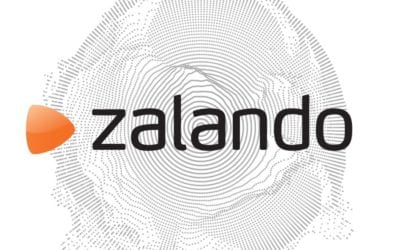In today's data-driven landscape, organizations increasingly rely on AI to gain insights, drive innovation, and ...
In the modern digital landscape, data monetization has emerged as a pivotal concept driving economic growth and ...
You've undoubtedly heard of APIs—ubiquitous yet often misunderstood. Curious to learn everything about APIs, or ...
Data engineering is the practice of designing and constructing large-scale systems for collecting, storing, and ...
In the fast-paced world of modern business, data collection, transformation, and utilization have become ...
As organizations pursue their digital transformation journey, Cloud Computing has become an essential foundation ...
Gartner is the world's leading data research and advisory firm. At the Gartner Data & Analytics Summit 2023, ...
Protecting sensitive data stands as a paramount concern for data-centric enterprises. To navigate this landscape ...
Data streaming is a transformative approach to managing and processing data in real-time, providing businesses ...
Data modernization is crucial to unlocking the value of data. Whether it's breaking down silos, improving ...
In the IT world, the terms data and information are often used as if they were synonyms. However, that’s ...
Generative AI is a type of artificial intelligence technology that can produce various kinds of content, including ...
Are you concerned about data quality? If so, you should be concerned about data normalization. Data normalization ...
In recent years, the evolution of data management practices has led to the emergence of a transformative concept ...
The chameleon changes its color to defend itself. Similarly, walking sticks mimic the appearance of twigs to ...
Companies are actively seeking faster and more cost-effective methods to manage their data. The advent of cloud ...
Edge Analytics enables data-driven companies to go straight to analyzing their data after it has been collected by ...
Synthetic data can be defined as artificially annotated information. They are generated by algorithms or computer ...
The COVID-19 pandemic has forced organizations worldwide to adopt remote work as the new norm. In fact, according ...
For organizations seeking to go further in their data collection, storage, and use, a data lakehouse is a perfect ...
With 60% of enterprise data now stored in the Cloud, and companies around the world turning to Cloud solutions to ...
No one doubts anymore that data has become one of the most strategic assets for a company. Competitiveness, ...
Zeenea is a proud sponsor of BARC’s Data Culture Survey 23. Get your free copy here.In last year’s BARC Data ...
Each year, Gartner predicts the major technology trends for the upcoming year. These 10 technology trends draw up ...
If we often talk about databases as a unique and monolithic set of information, they are in fact quite the ...
Zeenea is a proud sponsor of BARC’s Data Culture Survey 23. Get your free copy here.In last year’s BARC Data ...
In order to stand out from your competitors, innovate, and offer personalized products and services, collecting ...
Insurers today have access to massive amounts of data, including past and real-time data, enabling them to make ...
Zeenea is a proud sponsor of BARC’s Data Culture Survey 23. Get your free copy here.In last year’s BARC Data ...
Zeenea is a proud sponsor of BARC’s Data Culture Survey 23. Get your free copy here.“Data culture eats data ...
Data modeling is a central step of software engineering. A data-driven company's objectives are to evaluate all ...
At first, organizations were focused on collecting their enterprise data. Now, the challenge is to leverage ...
Since 2008, Airbnb has grown tremendously with over 6 million listings and 4 million hosts worldwide - becoming a ...
Because we have entered a world where data is your company's most valuable asset: the quality, security, and ...
Companies are collecting and processing more data than they did before and much less than they will tomorrow. ...
Relying simply on intuition is no longer possible - to gain a competitive advantage, it is essential to elevate ...
The term Data Intelligence refers to all the methods and processes that contribute to the collection and analysis ...
Cloud Security refers to the technologies, policies, controls, and services that protect data, applications, and ...
Many organizations have the objective of becoming data-driven, i.e. to base their strategic decisions - not on ...
Banks and insurance companies have one thing in common: they collect massive amounts of customer data. Due to ...
Committing to a data-driven project can sometimes feel like opening Pandora's box. To avoid getting lost along the ...
The recent COVID-19 crisis has forced retail players to reinvent themselves and accelerate their digital ...
The purpose of any data project is to transform available data into valuable assets that will put your company on ...
Multiple data sources, overburdening data assets - managing data consistently and pragmatically is a daily ...
As early as 2019, the concept of a Data Fabric was identified by Gartner as a major technological trend for 2022. ...
Data Quality refers to an organization’s ability to maintain the quality of its data in time. If we were to take ...
Data Quality refers to an organization’s ability to maintain the quality of its data in time. If we were to take ...
Data Quality refers to an organization’s ability to maintain the quality of its data in time. If we were to take ...
Data Quality refers to an organization’s ability to maintain the quality of its data in time. If we were to take ...
Data-driven companies do everything they can to efficiently collect and exploit data. But if they are not careful, ...
The growing importance of data in organizations undergoing digital transformation is redefining the roles and ...
The role of data is central to corporate strategies, no matter the industry. However, the challenges related to ...
Your data culture is growing! But if the amount of data at your disposal is exploding, then you may find it ...
Better understand your data for it to be used more quickly and efficiently: this is the promise of this ...
You’ve collected your data. But have you prepared, organized, and prioritized it? Now you have to go even further ...
It’s been said time and time again that data can bring so much value to a company. However, in order for your data ...
According to a study conducted by IDC, the data production growth rate in healthcare is expected to exceed that of ...
In this new era of information, new terms are used in organizations working with data: Data Management Platform, ...
Data Lakes are increasingly used by companies for storing their enterprise data. However, storing large quantities ...
Whether it comes from Product life cycles, marketing, or customer relations, data is omnipresent in the daily life ...
The recent COVID-19 pandemic has brought about major changes in the work culture and the Cloud is becoming an ...
So similar yet, so different! The roles of a Data Analyst and a Business Analyst are very often unclear, even ...
Data Product Management has been a regular topic of discussion among Data Science, Engineering and Product ...
Photo credit: AkeneoHaving large volumes of data is useless if they are of poor quality. The challenge of Data ...
2020 has marked a turning point in companies' processes for digital transformation. The coronavirus and its ...
Today, data impacts all sectors; all companies are confronted with data management challenges, in one way or ...
Total, one of the 7 “SuperMajor” oil companies, has recently opened their Digital Factory earlier this year in ...
Digital transformation has become a priority in organizations' business strategies and manufacturing industries ...
The place of data is - or should be - central to a manufacturing industry’s strategy. From production flows ...
Created in 2010, WeWork is a global office & workspace leasing company. Their objective is to provide space ...
Air France-KLM is the leading group in terms of international traffic departing from Europe. The airline is a ...
What is the difference between a data steward and a data owner? This question comes up over and over ...
It is no secret that the recent global pandemic has completely changed the way people do business. In March ...
Omni-channel leader with a presence in more than 250 cities in France, Monoprix, french retail chain, offers ...
It is no secret that after various articles from Gartner, and other famous data and analytics consulting firms ...
The recent global pandemic has left many organizations in an uncertain and fragile state. It is therefore a ...
As it’s been repeatedly said, digital business can not happen without data and analytics at its core. Technology ...
Contemporary business initiatives such as digital transformation, are facing an explosion of data volume and ...
Metadata is becoming increasingly important for modern data-driven enterprises. In a world where the data ...
Data Ops is a new way to address the deployment of data and analytics solutions.The success of this methodology ...
"Within the next year, the number of data and analytics experts in business units will grow at three times the ...
As the world leader in the music streaming market, it is without question that the huge firm is driven by ...
Data life cycle analysis is an element in data management that enterprises are still struggling to ...
In our last article, we spoke of Uber’s Databook , an in-house platform designed by their very own engineers with ...
Uber is one of the most fascinating companies to emerge over the past decade. Founded in 2009, Uber grew to become ...
With the emergence of Big Data, enterprises found themselves with a colossal amount of data. In order to ...
Data visualization is defined as a graphical representation of data. It is used to help people understand the context and significance of their information by showing patterns, trends and correlations that may be difficult to interpret in plain text form. These visual representations can be in the form of graphs, pie charts, heat maps, sparklines, and much more.
As a sponsor for this year’s AI Paris 2019, we were able to attend several conferences based on artificial ...
Zeenea’s participation in the AI & Big Data Global Expo in London on the 25th and 26th of April has officially ...
When you’re called Google, the data issue is more than just central. A colossal amount of information is generated ...
Like many numerous companies, Netflix has a colossal amount of data that come from many different data sources ...
For the second year in a row, Zeenea participated at Big Data Paris as a sponsor this past 11th and 12th ...
As a sponsor for the 2019 “Big Data Paris” trade show, Zeenea had the opportunity to attend to many ...
AirBnB is a burgeoning enterprise. To keep pace with their rapid expansion, AirBnB needed to really think about ...



































































































































































































































































































